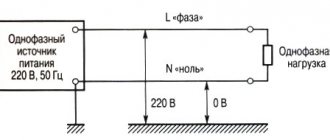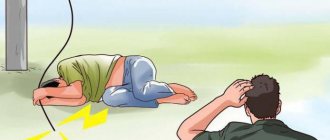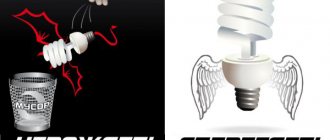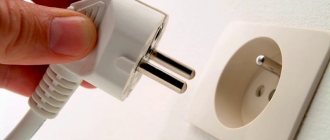This is static electricity...
Why do objects give electric shock?
A very unexpected and unpleasant situation occurs when you touch a car door, pet a cat, or wash your hands with tap water and feel an electrical discharge. The reasons why objects are shocked can be different, and by accurately identifying all the circumstances, it is quite possible to avoid repeated cases.
Why a person receives an electric shock: scientific basis + causes of electric shock + consequences of frequent electric shocks + tips for neutralizing static electricity at home + effective ways to cope with regular electric shock + step-by-step instructions on how to quickly neutralize the electric shock + advantages and disadvantages of metal objects to solve the problem with frequent electric shocks.
Everyone has experienced the fact that when they come into contact with a wool sweater or something similar, an electric shock occurs. Often, when we touch each other, we feel a small electrical discharge. It's not fatal, but quite unpleasant. Let's figure out why a person gets an electric shock, and what to do about it?
Scientific explanation of why a person receives an electric shock
Everyone is probably familiar with static electricity!
In fact, find the answer to the question: “Why does a person get electric shock?” not so difficult. To do this, just open a physics textbook. The reason for electric shock lies in static electricity. Let's remember the school curriculum: static electricity is a set of phenomena that are associated with the emergence, conservation and relaxation of free charges.
We regularly encounter static electricity in everyday life. For example, if there is a woolen carpet on the floor, then if any part of the body rubs against it, the person will receive a negative charge, while the carpet itself will be positively charged. Another example of static electricity is the electrification of a plastic comb. During the process of combing, it becomes negatively charged, and the hair, in turn, receives a positive charge. Thus, we conclude that a free electric charge arises in the process of friction of one object against another. This is especially noticeable if the items are made of synthetic materials.
Well, aren’t you tired of school facts yet? Then let's go even deeper! Can you guess how free charges are formed? Everything is simple here: in the process of friction of these same objects, the particles become actively moving. Accordingly, the balance is disrupted, and this balance is called static electricity. Outwardly, it manifests itself through a small click and spark. And, of course, a feeling that makes us pull back.
Well, we'll finish with the school curriculum. Unless you are interested in why not every person receives an electric shock... Well, since it’s interesting, I’ll tell you. In general, people are quite different by nature. This extends to many aspects, including how a person stores electrical charge. After all, one person can easily wear thermal underwear, a sweater made of natural wool, and felt boots in addition, but we will not see any signs of static electricity. Another, on the contrary, once tries on a T-shirt with barely noticeable synthetic fibers, and immediately begins to receive an electric shock. What is this if not the law of meanness?!
Oddly enough, this has nothing to do with the law of meanness. As physicists say, every person is capable of accumulating an electrical charge. But our electrical capacity is very different. This is the answer to the question why not every person receives an electric shock.
How to connect a washing machine if there is no ground?
Whatever one may say, the most adequate solution would be to connect through an RCD without grounding and other tricks. You need to understand that differential current protection (RCD or differential circuit breaker) does not guarantee protection against electric shocks. But these devices will turn off the voltage if you start to “pinch” decently. The fact is that without a “ground”, if any leakage occurs, a minimum current is required to trigger the RCD and a person can become a link in this chain.
In other words, before turning off you will still get an electric shock, but only briefly. This is much safer than no protection at all. Perhaps the protection will periodically work, seemingly for no reason - this indicates dampness inside the machine or a malfunction.
It is worth noting that the RCD is unlikely to protect against currents from the midpoint of the input capacitors.
Selecting a residual current switch (RCD) or a residual current circuit breaker (residual current switch) does not make any difference. The main thing to remember is that the RCD does not protect against normal overload or short circuit, so a regular machine is installed in series with it.
Leakage or differential current response rating ( IΔn
on the body) you need to select 10 mA or 30 mA. At 10 mA it is theoretically safer, but the protection may falsely trip more often.
RCDs of both electromechanical and electronic types are suitable for protection. However, the electromechanical type is preferable - it remains operational even if the zero is broken. But such devices are more expensive and more difficult to find on sale.
Well, the last piece of advice on RCDs: structurally, this device is designed for installation in a switchboard, which is where it actually belongs. However, with the old Soviet wiring in the electrical panel there is no separate branch for the washing machine; often 1-2 machines are installed for the entire apartment. Therefore, the protection should be installed on the branch that includes the socket for the machine.
When does a person feel a charge?
In addition to synthetic materials, they are well electrified:
- amber products;
- fur items;
- human hair;
- ebonite and other types of plastic;
- paper.
In most cases, we are most likely to get electrocuted during the winter. This is no magic. It’s just that with the onset of the cold season, we increasingly wear woolen items, and there may be several of them. Another reason why we get electrocuted more often in winter is dry air. In winter it is much drier than in summer.
Is static electricity dangerous?
The effect of static electricity on the human body has not yet been studied.
There is nothing wrong with a person's ability to produce an electric charge. The maximum harm we can get from this is an unpleasant sensation during which we cry out: “Oh, I got an electric shock!” Such blows do not cause any harm to health or life. However, this is only the case if electrical discharges occur rarely. But what if a person receives electric shock regularly?!
It is impossible to say for sure how long-term exposure to static electricity affects human health - this issue has not been fully studied. However, those few experiments in which a person was exposed to prolonged exposure to static electricity indicate such consequences.
How to deal with static electricity at home?
To deal with static electricity at home, follow these simple tips:
Install a humidifier.
Most often, static electricity is formed in the winter season, especially in a dry room. The situation is aggravated by radiators, which heat our homes and, at the same time, make the air in it even drier. A home gadget such as an air humidifier will help normalize the level of humidity, and therefore significantly reduce the likelihood of static voltage. You can increase the humidity in the apartment using indoor flowers.
The situation will also improve if you do not immediately turn off the boiled kettle - water particles will get into the air and make it more humid. Tip: you can add your favorite spices, such as cinnamon and cloves, to boiling water. Aroma oils will also come in handy.
Treat carpets with antistatic spray.
This spray can be easily found at any hardware store. Simply spray the product onto the carpet and let it dry thoroughly. This method will significantly reduce the likelihood of static electricity. An antistatic agent can also be prepared at home.
To do this, add a little fabric softener to a container of water. You need to put a sprayer on top and treat the carpets. By the way, many carpets boast excellent antistatic properties. In this case, you will not need any spray.
Use antistatic wipes.
This is simply a miracle remedy for car owners. Wipe your car seats with these wipes and you won't be exposed to static tension. By the way, antistatic spray can be used inside a car.
How to treat a sofa from static electricity
Treating the sofa with some means can make the electrification of the sofa less noticeable, and in the best case, remove it altogether.
Antiseptic is number 1 in the home fight against electrification of surfaces; you need to treat the entire sofa with it, leave it for a while, and then treat it with ordinary water from a spray bottle. The alcohol particles contained in the antiseptic will delay the occurrence of static electricity, and with the help of water you can slightly reduce the smell of alcohol. But perhaps the most effective way is to treat the sofa with a special antistatic agent. This will be a full-fledged action in the fight, but an unpleasant odor may appear.
Also, it is best to purchase upholstered furniture that is upholstered in leather or natural fabric. Synthetic fabric can easily cause static, so choosing a natural material right away will save you from possible problems. On the site you can find high-quality furniture upholstered with natural materials. High quality, reliability and durability of the material are the advantages of upholstered furniture from Zlatamebel.
How to deal with static tension on the body?
Although static electricity is a nuisance, it is easy to get rid of.
To stop shocking everyone around you, take note of a couple of tips:
Our body becomes a store of electrical charge when it dries out. Therefore, immediately after taking a bath, apply nourishing lotion or cream to your entire body. It will not only moisturize your skin, but also protect you from static electricity. It would be a good idea to use lotion throughout the day.
Try to wear clothes made from natural materials, and synthetics only in rare cases. If you need to get rid of static tension on your clothes as soon as possible, use an antistatic agent or, as a last resort, hairspray. Spraying water on clothes is useless, because it will only act until it dries.
Choose shoes with the right soles.
Shoes with leather soles are considered correct in terms of protection against static charge. It neutralizes the charge. Shoes with rubber soles, on the other hand, accumulate it. If the house is warm, walk without shoes. If you work with electronic devices, wear appropriate shoes that have special elements in the soles.
Prevent static electricity from appearing on washed laundry.
To prevent washed clothes from accumulating an electrical charge, sprinkle a small amount of baking soda on the items immediately before washing. It will prevent the appearance of electrical charges. The amount of baking soda directly depends on the number of things. If there are a lot of them, add half a glass of soda. For small amounts of laundry, add 2-3 tablespoons. Tip: adding baking soda will have a positive effect on the softness of your laundry. If you dry clothes in a special dryer, wipe it with a damp cloth or place a sponge soaked in water before adding clothes.
Shake washed clothes.
After removing items from the washing machine, shake them well before drying. By the way, drying clothes in the fresh air reduces the likelihood of static electricity.
Please note: ordinary table vinegar will help prevent the occurrence of static electricity on washed laundry. It should be added to the washing machine immediately before switching it to the rinse cycle. Pour vinegar strictly into the special compartment for rinse aid. The product can be combined with fabric softener - this will prevent the appearance of an unpleasant vinegar smell.
What to do?
To eliminate the accumulation of charge on clothes, it is recommended to use the already mentioned conditioner-rinse aids or antistatic agents, which should be used to treat the inner surface of fabric products. These products create a thin, invisible film on the surface that reliably retains moisture, which is the main enemy of static electricity. It also doesn’t hurt to occasionally treat chairs, blankets and carpets with an antistatic agent.
When combining clothes, you should remember that you should not combine fabrics that accumulate negative charges (lavsan, nitron, acetate fibers) and fabrics that accumulate positive charges (nylon, silk, natural wool) in your outfit.
In order to avoid electrification of hair when combing, it would be reasonable to use combs made of natural materials, as well as the use of special moisturizing shampoos and conditioners.
Maintaining a pleasant, humid indoor climate also has a positive effect on eliminating static electricity throughout the house. By making sure that clothes are not electrified, by reducing the overall level of charges accumulating on the surface of the body, you can also eliminate unexpected electric shocks from door handles, chairs, tables and other furniture, and so on.
How to neutralize static electricity quickly: step-by-step instructions
| Steps | Meaning |
| Step #1: Use a pin. | Simply attach a pin to the seam of your pants or to the collar of your shirt. All electrical charges will be concentrated on the metal of the pin. |
| Step #2: Use metal hangers. | To quickly remove the charge from clothing, touch it with a metal hanger. They will immediately collect all the charge on themselves. |
| Step #3: Carry something metal in your pocket. | If you are the “lucky one” who gets electrocuted on a regular basis, put a coin or metal keychain in your pocket. Touch this thing from time to time, it will “ground” you. |
Is there any point in metal things?
If you still doubt the effectiveness of pins and other metal devices in dealing with electric shocks, take a look here!
| Advantages | Flaws |
| Having a safety pin will allow you to reliably protect yourself (and at the same time those who are in close proximity to you) from electrical discharges. | You will have to transfer the “magic” pin from bag to bag, from pocket to pocket. During the first few days, you will most likely constantly lose metal items. |
| The pin is small and therefore invisible. Therefore, you don't have to worry about it ruining your image. | A pin attached to the wrong side of a garment can come undone at the most inopportune moment. |
| The pin will protect you from the evil eye if you believe in it. | A pin won't protect you from the evil eye if you don't believe in it. |
If you get an electric shock in the bathroom: safety measures in the room
Electrical wiring in a room with high humidity is already a great danger, and therefore care must be taken to minimize the likelihood of problems occurring.
Experts recommend installing special covers on:
- Sockets;
- Switches;
- Lighting fixtures, etc.
If there is even a minimal probability of water penetrating inside the cavity of the socket, then this becomes the cause of current leakage; accordingly, if you touch the wall, a tingling sensation occurs. Unfortunately, if the problems are not corrected, you can even get a severe electric shock, which may require medical help.
To prevent such situations, craftsmen recommend using plug-in designs, since such electrical devices have reliable protection against moisture penetration inside.
To ensure a 100% safety guarantee, you must first buy high-quality devices operating from the network and check that their technical characteristics coincide with the actual performance. In addition, when purchasing devices, you need to inspect their tightness and reliability of insulation. Despite this, the housing protection must be present, and if it is missing, then it must be installed independently. When laying electrical wiring, the equipment is installed in such a way that the switch is not close to the bathroom. The installation of the distribution box is carried out where there is no humidity, and the box itself must be completely sealed.
Tips for those who regularly receive electric shocks
For those who are already tired of electric shocks, there are a couple more practical tips:
Reduce discomfort.
To minimize shock pain, touch the metal object to parts of your body that are less sensitive. These are the elbows and knuckles.
While the vehicle is being refueled, all passengers must leave the vehicle. Otherwise, there is a high risk of static discharge and sparks. And it is already capable of causing a fire.
Materials that ignite quickly should be stored in a safe place.
Conditioner for removing electricity from the carpet.
After spraying the carpet, let it dry completely. Otherwise, the expected effect will not occur.
How to quickly remove static electricity from clothes:
The real story of why a person gets electrocuted
My friend has a “gift” - she can give an electric shock. No jokes, in all seriousness. As soon as she touches the interlocutor, an electric discharge shocks him with all his might. This amuses us and makes us happy. But she’s already pretty tired of this. The situation gets worse with the arrival of autumn, when the central heating turns on.
She recently told me this story: her husband comes home from work, she opens the door for him, kisses him, and they both get an electric shock! Both twitched and laughed. After a couple of minutes, the husband says that he has a headache and asks her to touch his forehead. She touches her forehead and everything repeats. The friend rushes to the bathroom in a panic, puts her hands under the stream of water and, as they say, hits her worse than before! She is in despair, does not understand what to do about it. Fabric softeners, antistatic sprays and other tips do not help. By the way, everything is in order with the wiring; she and her husband checked the apartment in detail for electrification. Maybe this is not connected with electricity, but with esotericism?! Who knows…
I think the question is: “Why does a person get electrocuted?” interested everyone at least once. If you are tired of being an electrical charge accumulator, use these tips!
We can safely say that every person, to one degree or another, has experienced an electric discharge. Not only an electrical appliance, but also a person can receive an electric shock. Bioelectric impulses appear when life begins and disappear with the onset of death. Let's consider how contact with electricity affects a person and how to avoid it.
Why is it dangerous when a surface is electrocuted?
In industry, electrostatic charge poses the greatest danger. Why in industry? There is a higher risk of unexpected ignition of flammable materials, which occurs upon contact with grounded equipment. In production, the charge can accumulate strongly; its energy is sufficient to ignite gas vapors and injure people.
Static electricity affects the operation of precision and ultra-precision instruments. There is a malfunction in the operation of radio communications and various automation equipment. Static discharge produces high voltage values, which is why many devices fail - they are not designed for such indicators.
Reasons why electric shock occurs
There are people who are often shocked by everything. What is the reason for this phenomenon is sometimes completely unclear. Obviously, an electric shock can be obtained by touching an object under voltage above 36 V. In this case, a short circuit occurs through the body, resulting in an electric shock. But a person receives a release from things that are far from tension.
The reason why everything gets electric is static electricity. It occurs when charges accumulate on the surface of physical bodies that do not conduct electricity well. They persist for some time, then a discharge occurs, causing discomfort.
Electrostatic charges arise as a result of friction, so they accumulate faster in winter, when the air becomes drier and a person wears wool, fur and synthetic clothing.
The surface is electrocuted: how to deal with it
In industry, it happens that a strong electric charge arises on the surface of films, fibers, and paper. Sometimes even loose material produces electric shock. To protect people and metal equipment from the effects of electrification, various methods are used. This is a well-arranged grounding, various methods to prevent current from entering the work area, and a special antistatic agent is also used.
The use of antistatic equipment gives good results. It can be active or passive, and protects metal objects well from discharge. The last category includes antistatic cords and brushes. They are indispensable in small enterprises, where they simply do not allow the charge to accumulate. For large volumes, antistatic strips and power supplies for them are needed. They neutralize static even at a fairly large distance. Moreover, the operation of such a device does not require active actions - it is enough to install it correctly and provide power.
To solve static problems in your plant, seek expert advice from Dr. Statik. Our experience in solving statics problems in various industries is more than 10 years. For consultation, contact us by phone. +7 or leave a request at
Why does a person get electrocuted?
We can say that a person is a kind of electrical system, so he receives an electric shock when there is a large accumulation of electrical charges. This happens for two reasons:
- The body, like a mini-power plant, produces its own electrical currents . They are not felt by humans, and can only be measured with ultra-sensitive instruments. Part of the biocurrents is used to maintain the vital functions of the body, and the excess is converted into static energy.
- Input of static electricity from outside . An electric charge, positive or negative, can accumulate on the surface of any substance (the so-called triboelectric effect). Electrification occurs when objects are heated or cooled, irradiated by energy sources, when a frictional force acts on them. Synthetics, fur, wool, and hair are especially strongly electrified (but cotton fabrics, wood, and glass are not “charged”).
The human body is well electrified. This is facilitated by the lack of grounding, wearing clothes and the fact that his skin is covered with hairs. When a person touches an "uncharged" person with a hand or other part of the body, a discharge occurs, which is manifested by a crackling or tingling sensation. Often bioelectricity of great power hits its owner painfully: he gets an electric shock from everything he touches.
Static electricity in production: causes
Every physical object can produce either a positive or a negative charge. Even air and glass can generate a positive charge; it is produced by wool, asbestos, and other materials. Negative – materials such as Teflon, polyethylene, polyester. Metal can also produce a charge: lead is positive, copper and brass are negative. There are also neutral materials - for example, paper and cotton.
The reasons why static electrification occurs are different:
- direct contact between physical bodies, after which their separation occurs;
- friction (this happens when two dielectrics or dielectrics and metal come into contact);
- various manipulations with the material (unwinding or winding layers);
- sudden temperature changes (when instant cooling occurs or moving into a heated oven);
- static stress occurs during cutting processes, especially with the use of special cutting machines.
The reasons for electrification in domestic and industrial environments are different. And the sources from which it arises, in both cases, can be computer equipment, monitors, or any electrical devices. Computers are equipped with fans designed to cool the device. When the air accelerates, the dust particles contained in it are constantly dispersed by the fan throughout the room and settle on surfaces. This is how an electrostatic charge arises, and even an ordinary table produces an electric shock.
Whether it's an apartment or an industrial space, static electricity often accumulates on linoleum floors. A person also accumulates it - for example, on his hair. Synthetic clothing often receives electric shock for the same reason.
In industry, the causes of static are most often associated with friction, for example, a conveyor belt on a shaft or a drive belt on a pulley. But it also happens that this happens due to the fact that during some production processes, dust particles in the air ducts move at high speed, and an electrostatic charge occurs. In some cases, it is formed even when flammable liquids pass through the pipeline.
Why doesn't every person get an electric shock?
Each person accumulates a different amount of electrostatic charges because they have individual resistance and electrical capacity (the ability to accumulate electricity). There is a theory according to which the amount of biocurrents produced also depends on the psycho-emotional state.
High static voltage in humans is a phenomenon that scientists still cannot solve. Such people (there are not many of them, they have lived at all times) can withstand mains voltage of 220 V and higher, so they calmly pick up wires with their bare hands. Their body can be used as a conductor to light a light bulb, but touching a carrier of extreme bioelectricity is dangerous.
Why are bedspreads and linens electrified?
Static electricity occurs when the following conditions are met:
- When there is friction between two materials,
- Two adjacent materials are electrically insulating, but not identical in composition,
- Conditions of increased dryness are observed, and humidity is at a very low level (this promotes the transfer of electrons).
According to this information, the dryer is ideal for generating static voltage. The materials vary, there is friction - literally all conditions are met.
Why does water beat with electric current?
Water is a conductor of electricity, so if electrical wiring and plumbing cross paths, you may feel an electric shock when washing your hands from the tap. The reason for this phenomenon may be the following:
- lack of proper grounding in the apartment;
- damaged insulation of bathroom electrical wiring;
- damage to the apartment's electrical network;
- installation of sockets, switches, lamps not intended for use in damp areas;
- use of water pipes for grounding;
- breakdown of the heating element in the boiler, water heater, washing machine;
- an ungrounded electric stove or dishwasher located in the kitchen near the sink.
The problem can be caused by neighbors who connect the neutral wire to the water pipe, stealing electricity. You can check this by turning off the power to your apartment: if the water is electric, then the cause is from outside.
How to determine the cause and why the zero does not give an electric shock
If headphones or a gas pipe are electrocuted in the house, then you need to diagnose this problem. Likewise, if current starts flowing during welding, it means there are exposed wires somewhere. Initially, in order to eliminate the cause, it must be discovered.
It is much better to entrust such a process to professionals who have:
- Knowledge in this area;
- Work experience;
- A necessary tool.
For a specialist of the highest category, it will not be difficult to identify moments in the form of theft of electricity, which is often carried out by neighbors, as well as breakdowns in wires. Such a sensitive situation is detected using a special highly sensitive device, which is owned by special companies.
Diagnostics is needed in any case, regardless of which particular object in the house is experiencing electric shock, for example, a bathroom, boiler, etc.
As a rule, it includes a number of activities. The presence and correct grounding of all electrical appliances in the house is checked. External damage to the wires is detected, for which it is enough to disconnect the devices from the network and simply identify the problem area. After proper diagnosis, it should become clear why it is impossible to use the faucet in the bathtub due to constant electric shocks.











